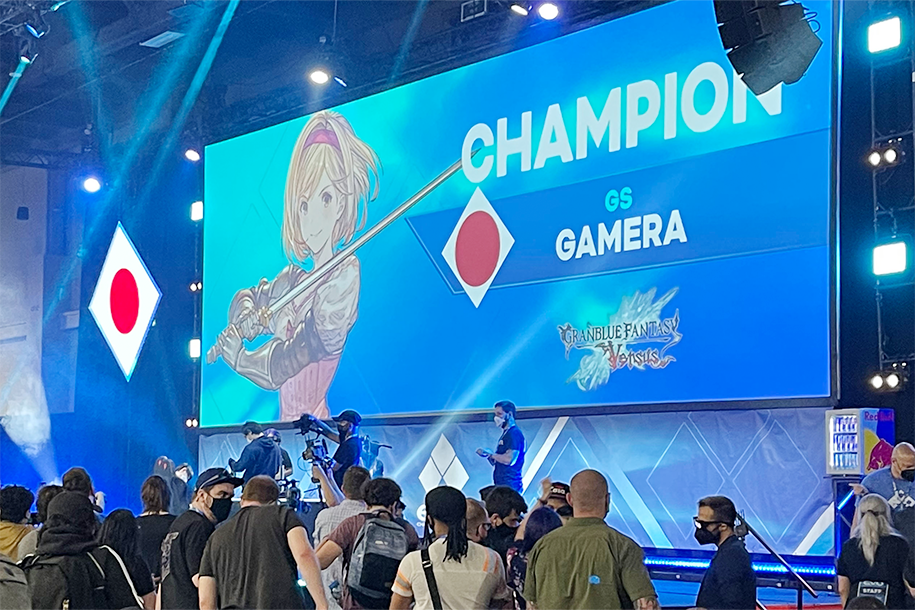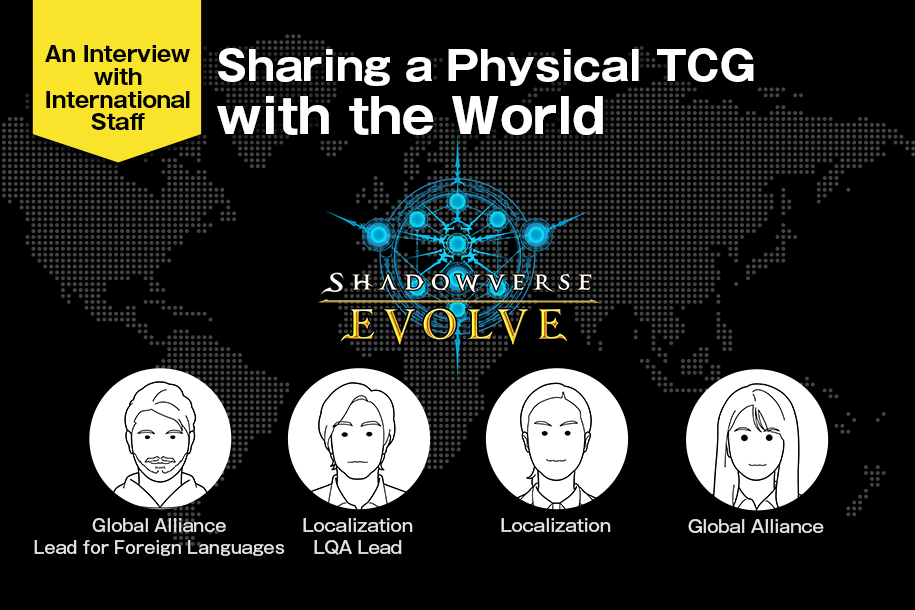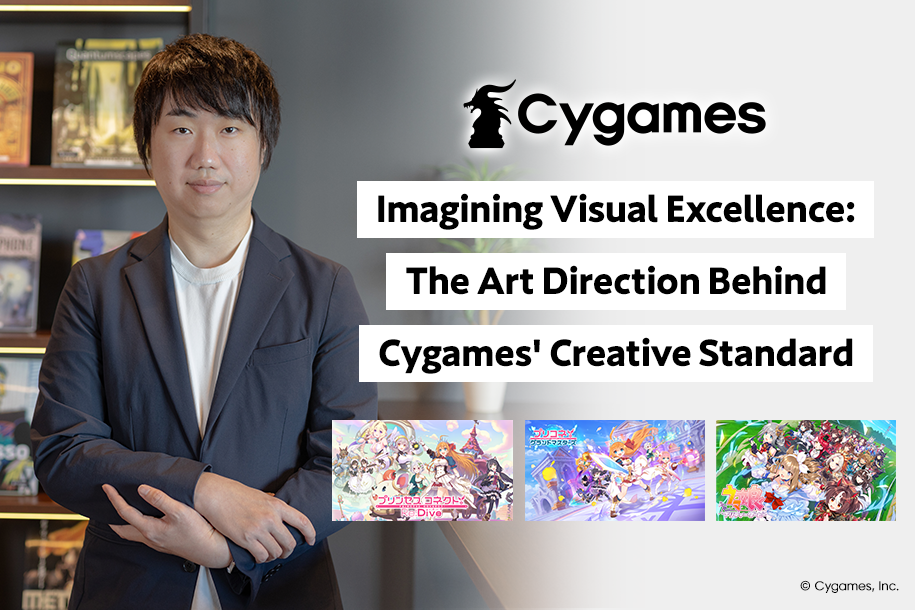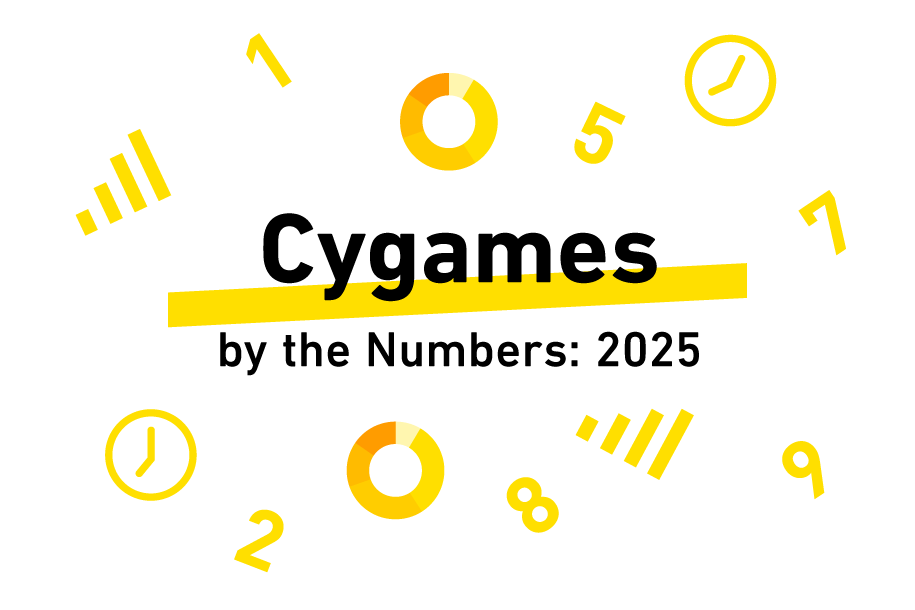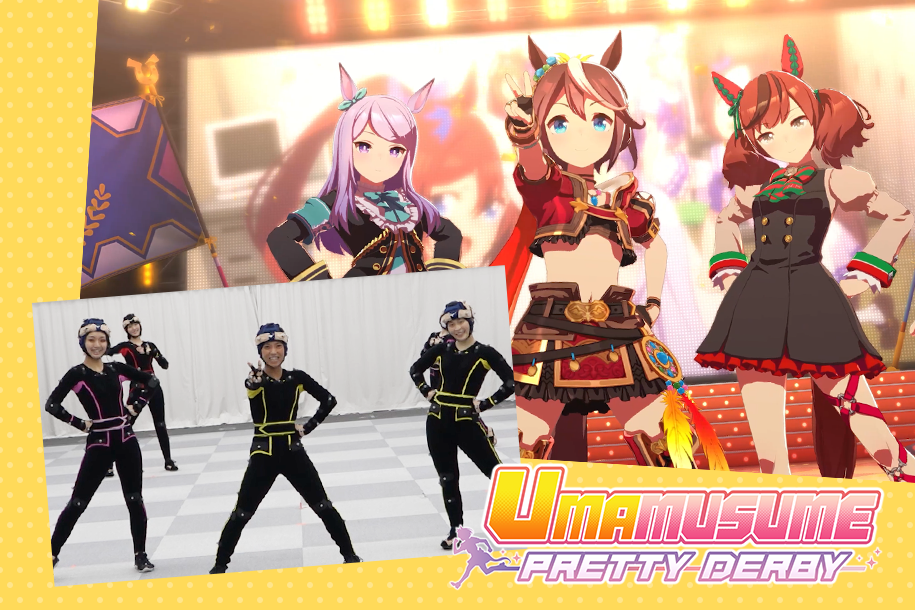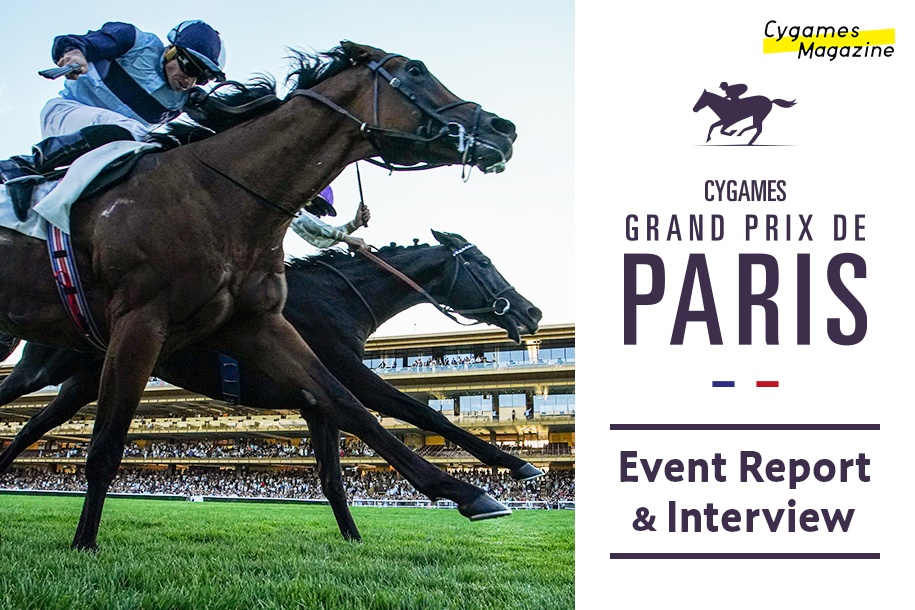G-Con Report: The Birth and Journey of the Granblue Fantasy Franchise
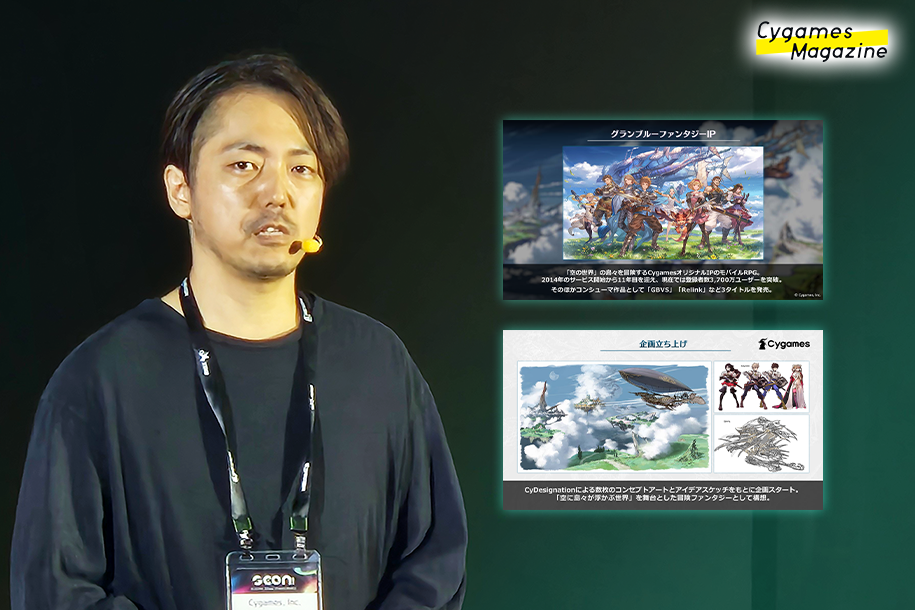
G-CON 2024, a video game conference held in Busan, South Korea, took place on November 15, 2024. Among the speakers at the event was Tetsuya Fukuhara, Creative Director of the Granblue Fantasy series, who spoke on “The Birth and Journey of the Granblue Fantasy Franchise.” This article reports his remarks, delving into the history of the franchise’s expansion that fans heretofore may not have known. We hope you make some delightful discoveries reading through it.
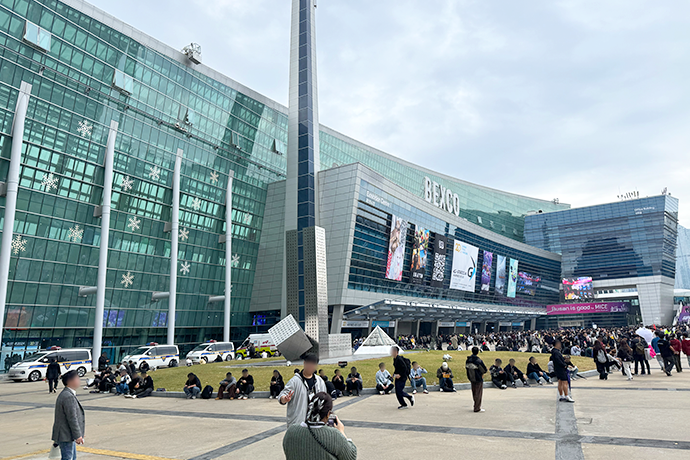
- Creative DirectorTetsuya Fukuhara
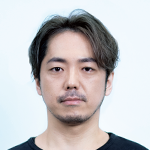
- Having joined Cygames in 2012, Tetsuya Fukuhara has been involved with Granblue Fantasy as its director for eleven years, steering its development and management from its inception to 2024. Currently, he oversees the development of console spin-offs and continues to seek new ways to introduce the Granblue Fantasy franchise to a wider global audience. His other titles include Granblue Fantasy: Versus, Granblue Fantasy Versus: Rising, and Granblue Fantasy: Relink.
Fukuhara Speaks at South Korea’s Biggest Game Conference
Hello, everyone. I’m Tetsuya Fukuhara, the creative director of Cygames’ Granblue Fantasy franchise, and it’s my great honor to speak to you all here at G-CON.
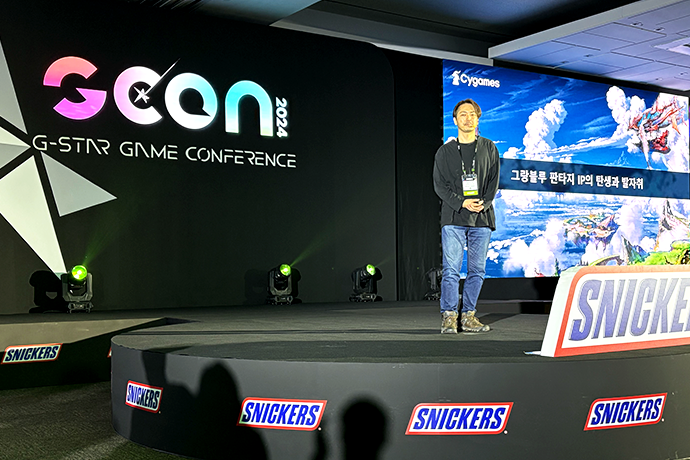
The theme of today’s talk is “The Birth and Journey of the Granblue Fantasy Franchise.” I plan to go into how the Granblue IP started, the developments it’s gone through in the last decade, and my perspective as director of the franchise.
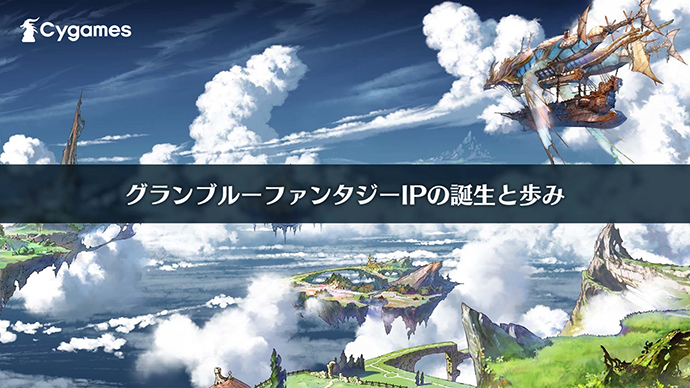
First of all, allow me to give a quick self-introduction. As I mentioned earlier, I’m the creative director of Granblue Fantasy, and, to the present day, I’ve been involved with all the various game titles that carry the name.
In terms of my career, I entered Cygames in April 2012 and first worked on Rage of Bahamut as part of the in-game event planning team. In 2013, I became the director of a project that would come to be known as Granblue Fantasy, overseeing its development and management from inception to the present day.
Now, I’d like to introduce the Granblue IP. Granblue Fantasy is a mobile RPG game that’s set in the realm of the sky. It was released in March 2014 and is currently in its eleventh year of operations. It started as a browser game for the smartphone, and can also be played on PC. The game can be considered a special presence in Japanese mobile game history, given its longevity as a browser game.
Additionally, in 2016, the feature to switch over to the English version of the game was added. It’s from there that the game gradually began to take off beyond Japan.
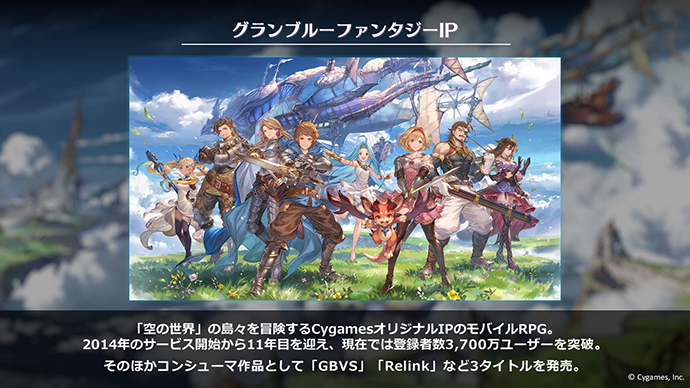
In the decade since the original game’s launch, Granblue has expanded into a wide array of media, including animation, comics, and novels. It’s also been proactive in simultaneously branching out into console title development, which is another unique achievement in the world of social game IPs.
Granblue Over a Decade: The Genesis of a Game
With regard to the game’s roots, there were already a few pieces of concept art created by CyDesignation.* Koichi Watanabe, the president of Cygames, gave us the orders to use the art as a springboard for a fantasy RPG game set in a sky realm.
*CyDesignation started in 2013 as a subsidiary of Cygames. The company specializes in creating consistently high-quality game characters and background art designs.

The concept art ranged from background art to character designs. My job was to build the game’s framework and expand the world while preserving the feel of the art. 2013 was the year when smartphone app development was in its “native shift”* phase, so Granblue Fantasy was the last browser game the company developed. However, the browser format did give the game some advantages not found in native apps: a high degree of expandability, immediate updates, and not requiring installations. We used these features to our advantage when laying the groundwork for mechanics and events; our update schedule was influenced by the browser format as well.
*Native shift refers to the transition of games from the mainstream web and browser platforms to specific native apps, like those for iOS and Android.
Back in 2013, it was thought that mobile games for the browser couldn’t support elaborate animations, and that was also true of sound and music. With the help of talented team members, however, we did what we could within the bounds of smartphone browser technology while optimizing the game’s content. It took a lot of trial and error, but we eventually got there.
Looking back on it now, the work we did on the animation and sound was groundbreaking and quite stimulating for the team. The game was released, and it became a success in terms of sales numbers as well. This in turn allowed us to develop various media adaptations while continuing to run the original game.
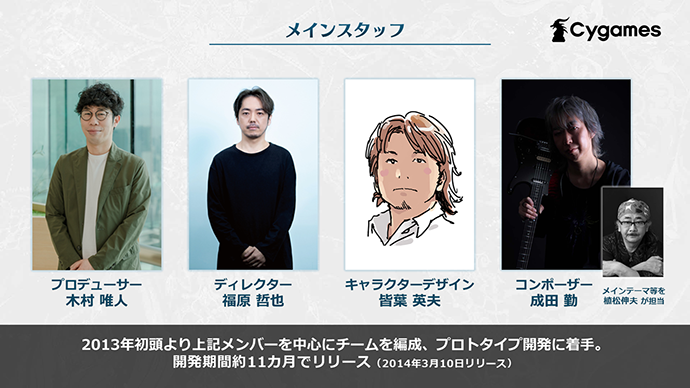
The period from development to release was eleven months.
The main team consisted of the members you see here. We have Yuito Kimura, the game’s producer as well as the company’s executive director; Hideo Minaba, the character designer and CEO of CyDesignation; and Tsutomu Narita, the composer.
The baton of producer has changed hands several times over the last decade; I myself as the creative director have been more focused on the development of our console titles and the franchise as a whole in recent years. In terms of the game’s soundtrack, the main theme and a selection of other songs have been composed by Nobuo Uematsu, while about 130 of the 140 in-game songs have been composed by Mr. Narita, as well as the soundtracks of the animated series and our console titles.
Artbooks, Soundtracks, Animated Series, and Offline Events:
The Multiple Ways to Attract and Engage Fans
From here on out, I’d like to talk about how the franchise has expanded since the release of the original game. But before that, let me explain the concept of the game’s development. If we had to describe Granblue Fantasy in a nutshell, it was designed as a “new style of JPRG available as a mobile service.”
The three pillars that make JRPGs so fun are the battle, training, and story. We set out to make a game that included those aspects, that could also be played easily with one hand, for around five minutes a day. We went out of our way to create enough content and depth so that all players—whether they play casually or prefer to dive in deep—could enjoy the experience.
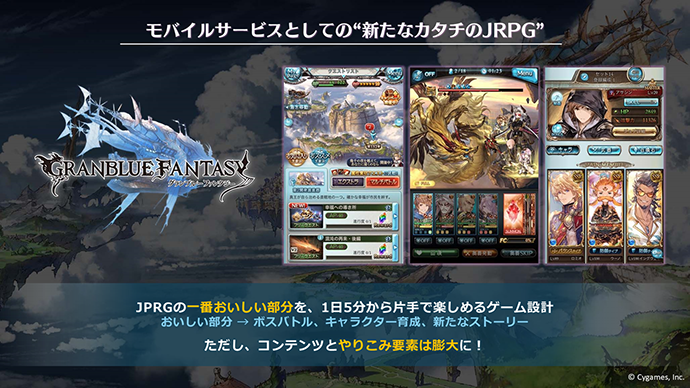
With native apps thriving, titles that featured 3D character battles were starting to appear on the market. On the other hand, with browser apps, there was a significant limitation to how much we could achieve, so we went with the 2D side view. Having said that, this wasn’t a negative decision for us: the style has been ubiquitous for over thirty years in RPG battles. We figured that even if smartphone specs were upgraded, display quality would not degrade as a result, and so we made our choice accordingly.
New story events have been released monthly for ten years. While many of them follow a classic RPG theme that can be enjoyed by casual players, we’ve also made it a point to add comedic elements or unconventional, slightly out-of-left-field stories involving robots and so on, to keep our players engaged with fresh content. This approach has expanded the in-game universe, and the variation on story themes has meant that there’s a huge breadth of content. The game is still active to this day, with many players getting drawn in by one aspect, only to stay for other elements that catch their attention.
Going back to what I said about the display quality not degrading, one way we ensured it would remain high was through our amazing artwork, which is a point of pride for Cygames. The number of pieces we create in a year is enormous, which means that our art collection grows accordingly. This is evident in the increasing page numbers of the artbooks we publish annually. The Granblue artbooks are among the most popular products we release; to date, about 4,500 pages worth of content have been published, with each volume showcasing art released during the previous year.
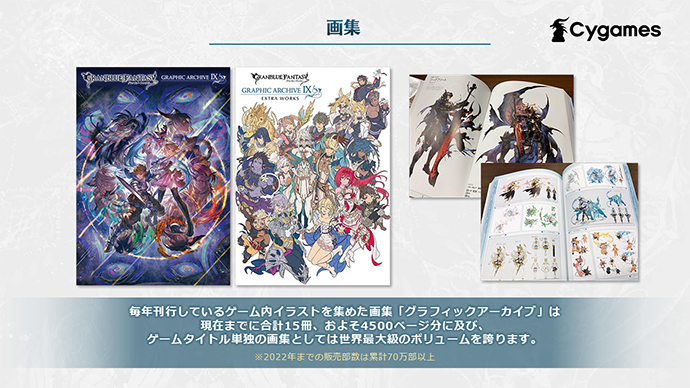
We’ve also put a lot of effort into the sounds and music of Granblue Fantasy. Currently, there are nine published original soundtrack volumes, as well as piano arrangements and soundtracks for the console games. Tallying all the musical pieces, we’ve created over 400 songs. In addition, we’ve released thirty-two character song CDs, which I think is a pretty impressive volume for a single game.
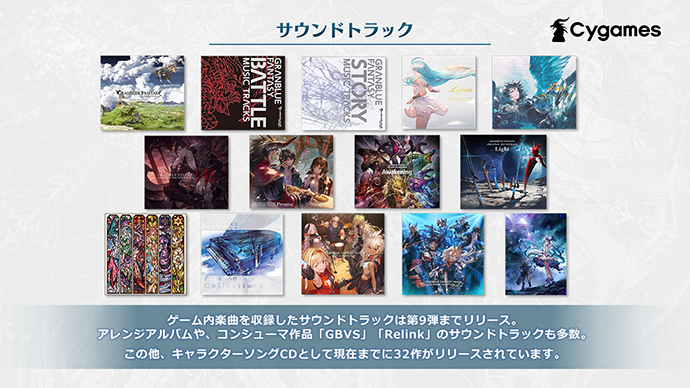
We also released several animated series: Two seasons of Granblue Fantasy: The Animation, as well as an anime version of the daily four-panel comics published in-game. In other media, we have comics and novelizations that follow the main story, stories that focus on specific characters, or stories that cast side characters as the protagonist, and so on. I believe there are around fifty volumes currently available.
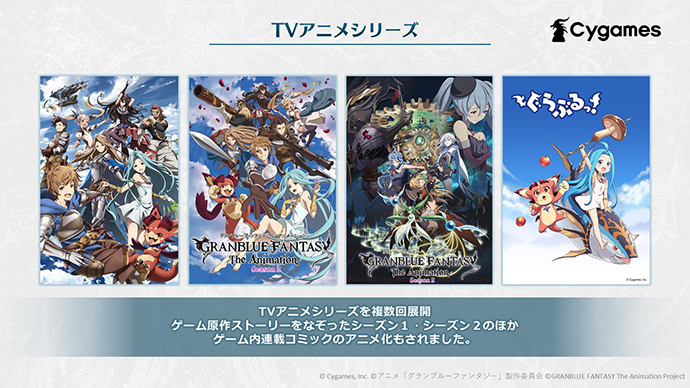
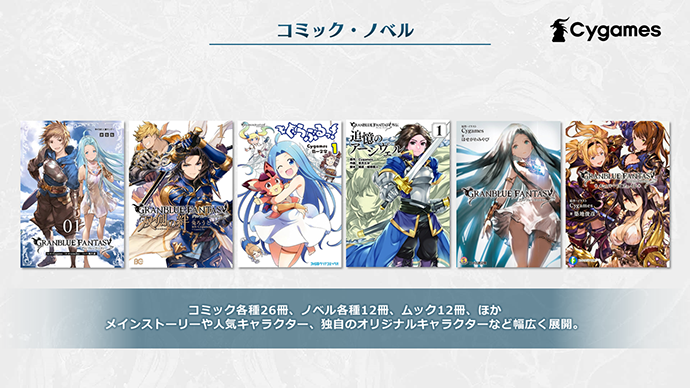
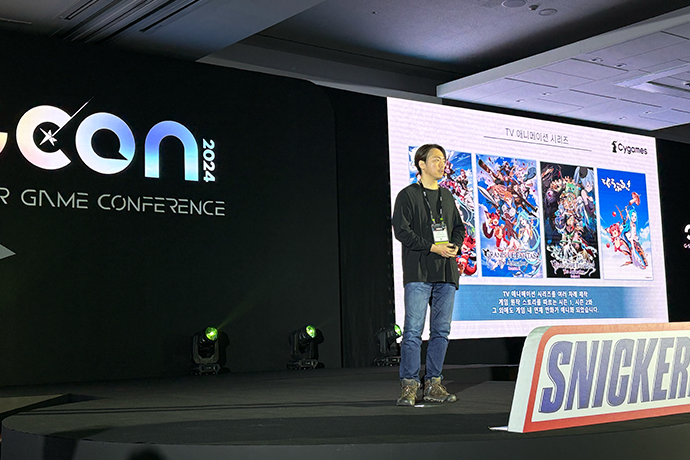
We also host Granblue Fes, an annual offline event that’s been going strong since 2017. It’s extremely popular among fans, with attendance numbers growing to the point where it’s now the biggest event for a single game title in Japan. As Granblue is a GaaS (games as a service) title, we see these events as an extremely vital way of hyping up our players and giving back to them.
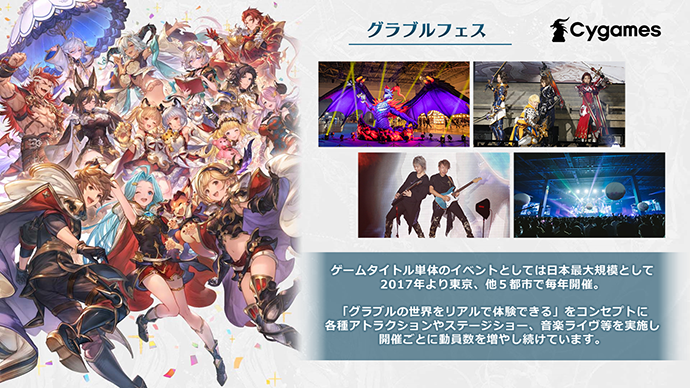
Why Make a Granblue Fighting Game?
The Thinking Behind the GBVS Series
Next, let’s talk about our console titles. While the original game is still in service, we wanted to create a spin-off that could stand on its own merits and be more than just a one-off collector’s item. To that end, we challenged ourselves to create a high-quality experience that could capture the attention of existing fans, while also drawing in new fans who regularly play console games and introduce them to the original title. The end result would be a synergistic flow that would expand the Granblue franchise as a whole.

First in our console title lineup is Granblue Fantasy: Versus (hereafter: GBVS). It’s a fighting game with an especially active Korean community, for which we’re very grateful. I personally have had the chance to meet with Korean players at EVO Japan, and was happy to hear about their experiences.
GBVS is a completely different genre from the original mobile RPG, so you might be wondering about the concept behind its creation.
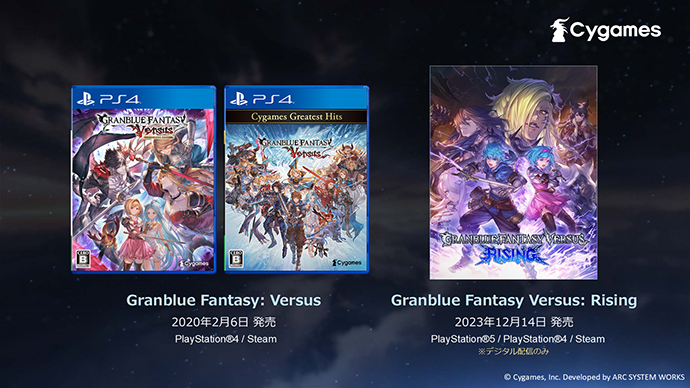
GBVS, the first of our fighting game titles, was released in 2020, followed by Granblue Fantasy Versus: Rising (hereafter: GBVSR) in December 2023. The former is available on PlayStation®4 and Steam, while the latter is available on PlayStation®4, PlayStation®5, and Steam.
So why did we want to create a fighting game in the franchise? Well, Cygames has contributed to the esports scene out of a desire to provide quality entertainment to the entire industry. Another Cygames title, Shadowverse, was created with that in mind. However, the stars of many esports events are fighting games, and we wanted to make something along those lines. Since we’d be newcomers in this category, we thought going with an existing IP would be best. I myself wanted to take on the challenge of developing a fighting game, so Granblue Fantasy was chosen, and I worked simultaneously on running the mobile game and helming GBVS.
GBVS is classified as a “fighting action RPG” that includes an RPG-style story mode aimed at drawing in more fighting game fans. The momentum of mobile apps in the late 2010s meant that Japan’s console market was ailing somewhat. Many players were expressing sentiments such as, “I sold off my consoles ages ago,” or “I play a ton of mobile games; I’ve never actually owned any console games.” We wanted to see if we could convince those players, especially the younger generation who grew up on mobile games, to change their minds.
We were fortunate that we could develop the game in partnership with Arc System Works, the developers of the Guilty Gear series. The studio’s art style meshes very well with Granblue’s, and there are a lot of staff who also happened to be fans of Granblue Fantasy. It was great being able work with so many passionate, wonderful people.

The concept for each of the game’s elements is more or less as written in this slide. We wanted to differentiate GBVS from the mobile RPG and make it its own unique creation.
We developed this game overall as a “definitive entry title for fighting game newcomers.” The fighting game genre is often seen as one with a steep learning curve; we wanted to bring down that psychological barrier and make it easier for players to get into fighting games as a whole. At the forefront of our minds was designing the game for the generation that grew up on mobile games, who may never have held a controller. We also wanted to effect change on a genre that has traditionally looked at one-button special moves as taboo; as newcomers to fighting games, whose origins began in mobile games, we thought we were in the right place to do that.
When it came to art, we prioritized its visibility throughout the game by unifying it under the 2D toon animation style. For GBVSR, updates were made to the shaders, which allowed us to maintain visibility while further emphasizing the feel of the original game’s artwork. As for the stage backgrounds, we faithfully recreated the original 2D artistic touch for 3D. We approached these two challenges simultaneously when creating the game.
For the story, we researched the format and flow of story modes in other fighting games. We held to those tenets while also integrating the meta aspects of the Granblue franchise. For example, the fact that Granblue Fantasy has two main characters, Gran and Djeeta, who exist simultaneously, was a fun element that we could work seamlessly into a spin-off fighting game.
As for the soundtrack, we wanted to gear it for a fighting game, so we wrote new theme songs for each of the characters. The power of music and its influence is no small thing; I think the soundtrack served to expand the worldview of the Granblue franchise for the developers and players alike.
Relink: A Light Action RPG for All Fans
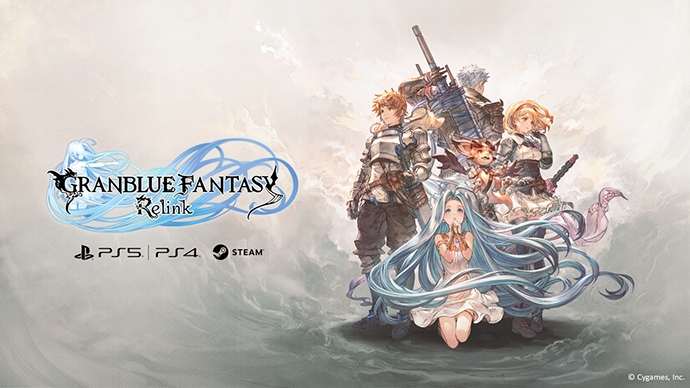
Moving on, I’d like to discuss Granblue Fantasy: Relink (hereafter: Relink). The game was released globally in February 2024 as an action RPG available on PlayStation®4, PlayStation®5, and Steam, and sold one million copies in very short order. Outside of Japan, sales have been steady, especially in Asian regions including Korea. Thank you for your continued support of the game.
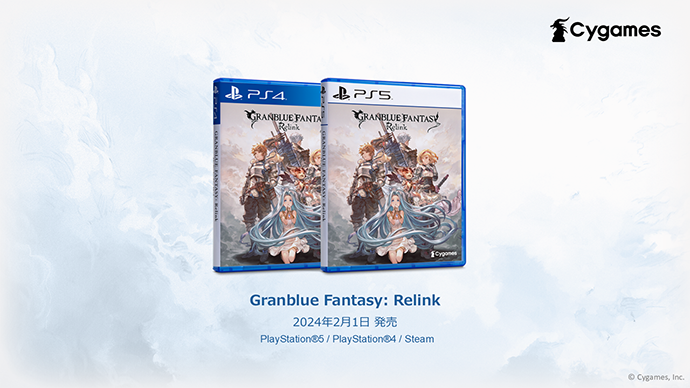
As I mentioned, Relink is an action RPG, and we chose this genre for two reasons. First, from the mid-2010s onward, action RPGs gained global popularity and have, in a good way, become a mainstay genre. Second, many fans of the original game have expressed that if the game were to be adapted for console, they would like to see an action RPG.
Relink is an in-house production. Osaka Cygames was founded to specialize in console game development, and they took the lead in developing the title. Given the fantasy genre’s affinity with console games, the seeds of the plan were sown as early as 2016, but since we were starting from scratch developing a large-scale title for the platform, it took quite a bit of time to get off the ground. However, thanks to the efforts and support of our staff across various departments, we finally got Relink across the finish line in 2024. Since we did take our time in developing the game, we’ve thankfully received much praise for the game’s overall quality, and gained precious know-how for future titles.
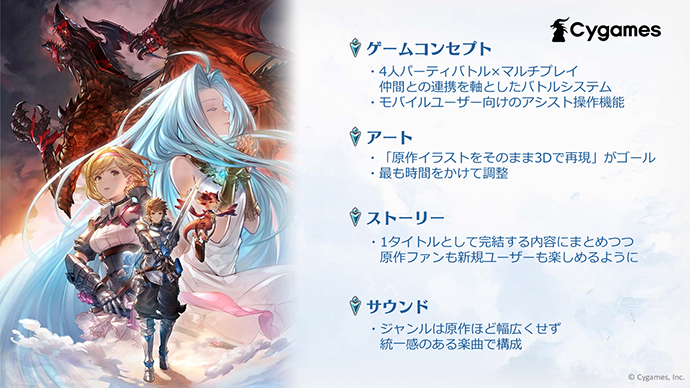
You can see the concept behind each element of the game on this slide.
The original game featured battles and multiplayer events carried out in a four-member party. We adapted that concept of “cooperating with allies” into the battle mechanics of Relink. One of the unique characteristics of Relink is that you can form parties with NPCs and still get the multiplayer team experience. The battles are fairly speedy, emphasizing a more “stylish” combat aesthetic. At the same time, since you can switch up party members to your liking, you can play as many as twenty different characters in the roster, each with their own unique feel. I think this is the aspect of Relink’s gameplay that stands out the most.
Also, Relink, like GBVS, was created with the mobile game players very strongly in mind. We made the game easy to delve into and complete through to the ending even if you’re new to action games, while also retaining a lot of action game elements.
For the art, our goal was to recreate the art from the original game to 3D. It took a lot of time doing research and testing to get everything just right. The background textures are all hand-drawn, and to achieve the 2D art feel, we made many fine lighting adjustments. We also got a helping hand from the original game’s art team to brush up the character and background art to create a unified look that elevates the quality of the work as a whole.
Story-wise, we aimed to create something that even people unfamiliar with Granblue Fantasy could enjoy. Since the original story is ongoing, we included some connecting elements while placing emphasis on telling our tale in a way that new players could quickly understand the world they’re in and start playing. At the same time, we added depth that players who are familiar with the original series could dig their teeth into. It was a tall order to fill, but seeing the reactions from players after the game’s release told us we’d made the right decisions.
With regard to the soundtrack, we didn’t dance across genres like we tend to do in the original game. Rather, we aimed to unify the feel of the game through the music, so we could give it its own unique profile. We were inspired by ’90s RPGs and aimed for melodious tunes that make you want to hum along, interwoven with extravagant instrumentals.
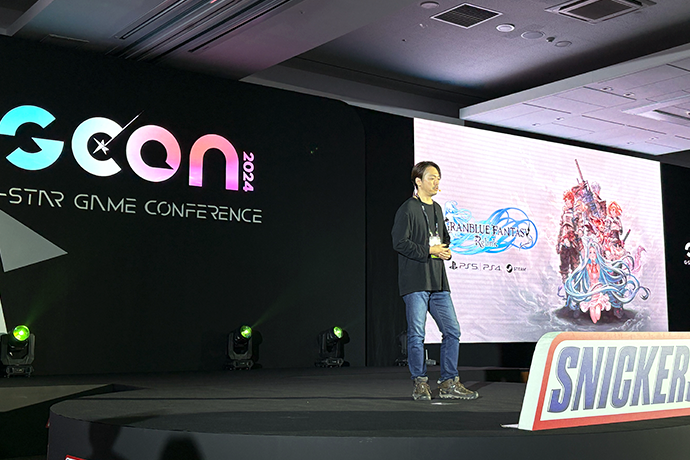
Hints for Global Expansion Gained from Releasing Multigenre Works
I’d now like to briefly break down what happened when we released three titles across multiple genres.
Examples of titles leaping from the mobile game sphere to console games may be rare in the industry. However, each title’s release and multimedia approach has gained us fans in a variety of spaces. This has created a synergy where, for example, players who normally play console games have been drawn to mobile games. Given that we wanted to grow the fan base of the franchise as a whole, I think it’s safe to say that we’ve seen some measure of success on that front.
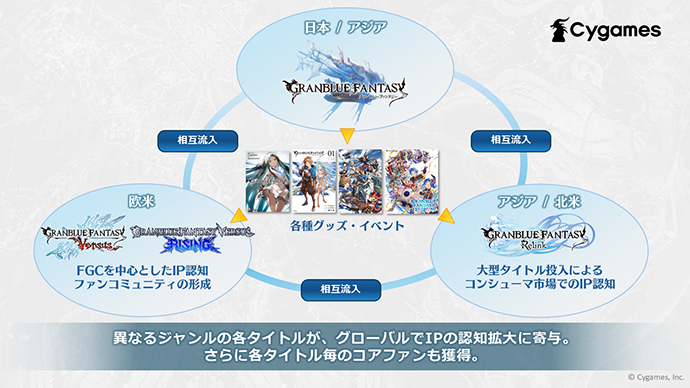
One of the neat things about this expansion has been getting to see the regional preferences pop up. Japan’s still big on mobile games, while fighting games like GBVS are huge in Europe and North America. Meanwhile, Asia and North America gravitate toward the action RPG Relink. So, from North American players I’ll hear many comments along the lines of, “I got into Granblue through GBVS.” A fairly large North American fan base existed before, but when we went to Anime Expo after GBVS’s release, we spoke to about 800 people. What surprised me was that 70 to 80% of them said that they got into the Granblue franchise through GBVS.
Even within the same Granblue franchise, I came to realize, with each game’s release, that how deeply we could make inroads with certain regions changed depending on the genre of the specific game. I think it’s very important to maintain and broaden the links we’ve created with fans of the various titles by tailoring our approach to each region. By continuing our efforts on this front, we hope to create new and organic synergies, solidify what we already have, and forge more links to expand the Granblue franchise.
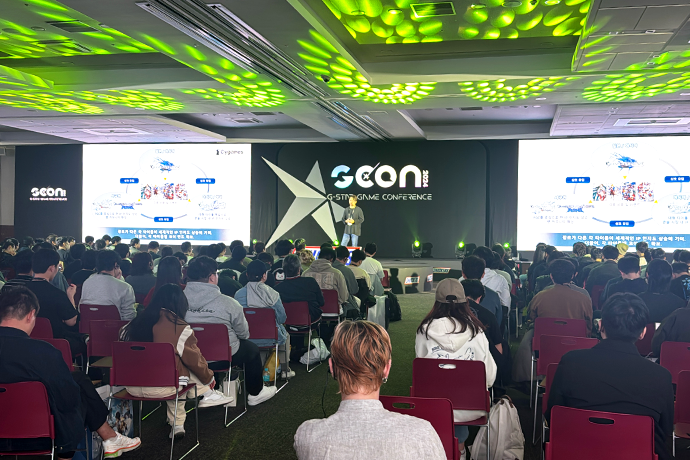
For those who came to this talk without having experienced Granblue Fantasy before, I hope I could spark your interest. I recommend playing Relink or GBVS, or watching the animated series. Try one of these out, and I think you’ll understand what makes Granblue so appealing to a lot of people.
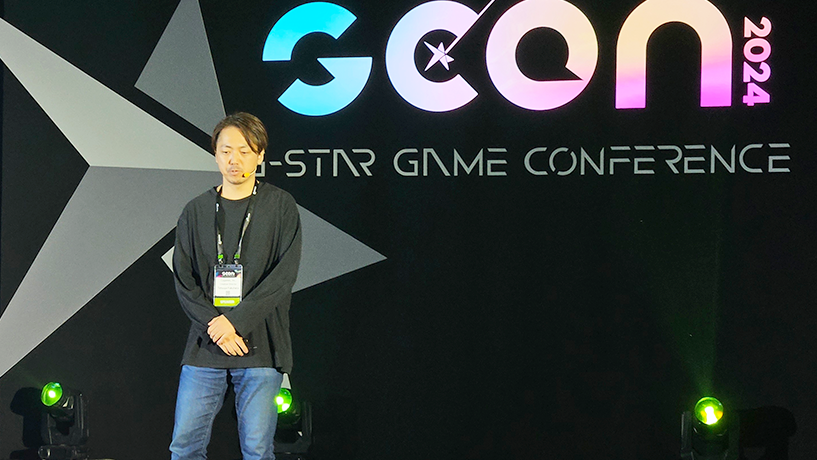
As we wrap up, I’d like to talk about Cygames and the various challenges the company is taking on to fulfill its mission to be “The Best in Entertainment.” I’ve mentioned the term “Granblue franchise” a number of times, but even from this talk, you can see the great effort that went into expanding the title across multiple game genres. I myself worked hard to make sure each title stood out in its respective genre.
From the start of service in 2014, Granblue Fantasy has been enjoyed by people in Japan and beyond. Korean players especially have loved the game from its start, and once the console titles were released, the number of people who’ve enjoyed playing the game has only increased. I can’t express how happy that makes me. Thank you very much.
We’ll continue putting forth every effort to bring you the best in entertainment, so we ask for your continued support with the Granblue franchise and Cygames.
That’s all for my talk today. Thank you for taking the time to listen!
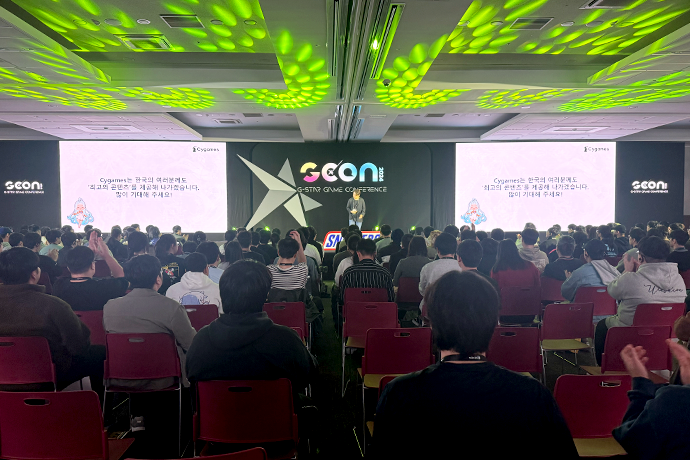
Extra Snapshot
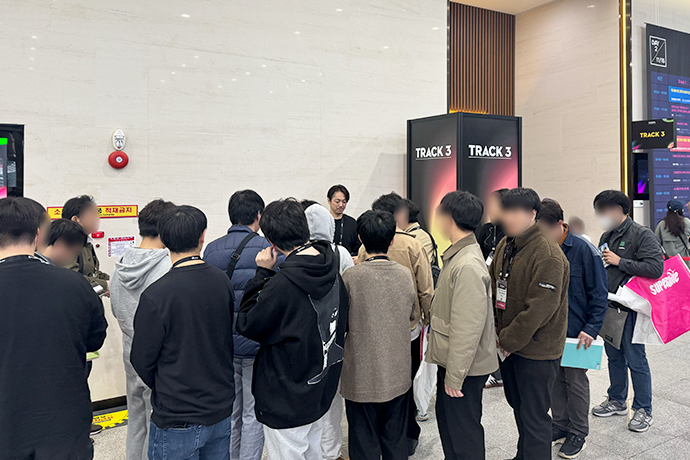
That concludes our recap of Fukuhara’s talk at G-CON 2024.
We hope you look forward to more from the Granblue franchise!




